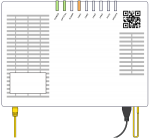I've recently purchased the RT-AX88U and installed Asuswrt-Merlin. Coming from Linksys and DD-WRT I'm having a much better experience and so far love everything I'm seeing. I am having a bit of a problem though and I've searched Google and this forum but none of the solutions have worked. I have a DHCP Gigabit connection and am running 384.19. If I'm connected directly to my ISP Modem I get a SpeedTest result of about 940Mbps down. With the Modem in Bridge Mode and the AX88U as the DHCP server I struggle to get anything above 350-400Mbps down. So far I've done the following,
Adaptive QoS -> QoS -> OFF
Guest Network -> OFF
LAN -> Switch Control-> Spanning-Tree Protocol -> OFF (Jumbo Frame is also OFF)
Traffic Analyzer -> Statistic -> OFF
Tools -> Sysinfo -> Hardware Acceleration -> Runner and Flow Cache are both listed as Enabled
I understand with the AX88U NAT is always enabled and that's why I can't find an option for it.
I'll note that file transfer over LAN maxes out the GigE ports, it's just WAN to LAN that I'm having the problem with.
Any thoughts on what I can try here would be greatly appreciated.
Adaptive QoS -> QoS -> OFF
Guest Network -> OFF
LAN -> Switch Control-> Spanning-Tree Protocol -> OFF (Jumbo Frame is also OFF)
Traffic Analyzer -> Statistic -> OFF
Tools -> Sysinfo -> Hardware Acceleration -> Runner and Flow Cache are both listed as Enabled
I understand with the AX88U NAT is always enabled and that's why I can't find an option for it.
I'll note that file transfer over LAN maxes out the GigE ports, it's just WAN to LAN that I'm having the problem with.
Any thoughts on what I can try here would be greatly appreciated.


